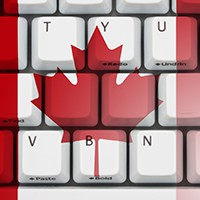Last updated: August 09 2016

Average Refund Is $1678 - 84% File Online
Electronic filing is all the rage in Canada, as close to 750,000 more people chose to file their returns electronically in the 2016 tax filing season, for the 2015 T1 returns. One compelling reason: the average tax refund of $1678 hits your bank account sooner when professionals use EFILE or individuals use NETFILE. Close to 10 million people had those cheques electronically deposited.
A new service, called “Auto-fill my return” was also well received: 5 million returns used it. That service pushes through information CRA has received from employers and investment institutions on information slips, as well as carry-forward information and other amounts CRA has on file, directly into the tax filing software individuals are using.
CRA was also busy on their phone lines, however. They answered 24.5 million calls from taxpayers and businesses between April 1, 2015 and March 31, 2016.
At this time of the year, looking back at past errors or omissions is important, as tax filing adjustments can be made to recover most tax deductions and credits available. Filing a previously unfiled return can generate much-needed cash flow now, or in your future: file to create RRSP contribution room, report valuable capital losses that will offset capital gains you may have had in the last three years or indefinitely into your future, or help you recover overpaid taxes in those years.
 Giving the CRA an interest-free loan for your tax overpayment all year long is not considered good financial planning. For the 2016 tax filing year, plan now for an optimal tax filing result – paying only the correct amount of tax throughout the year and not one cent more. Proper planning now helps those who have trouble saving for retirement. Based on the average tax refund, you could put an extra $140 a month away into a TFSA or RRSP, as the annual saving goal.
Giving the CRA an interest-free loan for your tax overpayment all year long is not considered good financial planning. For the 2016 tax filing year, plan now for an optimal tax filing result – paying only the correct amount of tax throughout the year and not one cent more. Proper planning now helps those who have trouble saving for retirement. Based on the average tax refund, you could put an extra $140 a month away into a TFSA or RRSP, as the annual saving goal.
It’s not too late, however, to shore up those retirement funds now. When you contribute your tax refund into your TFSA account, you’ll earn tax-free investment income, which is a great way to plan for a tax-free retirement. When you put the money away into an RRSP, you’ll increase your tax refund next year, and, if you have a family, you may qualify for or increase your new Canada Child Benefits.
If you owe mountains of debt on your consumer credit cards, however, paying down the balance will eradicate non-deductible interest paid at double-digit rates.
For help in planning your worry-free retirement now, take a free trial of Knowledge Bureau’s Income Tax Estimator for 2016, or speak to a DFA-Tax Services Specialist or MFA-Retirement and Estate Services Specialist.
Evelyn is President of Knowledge Bureau and one of Canada’s most prolific financial authors of 52 books, including her most recent Family Tax Essentials, How to Build a Wealth Purpose with a Tax Strategy.





